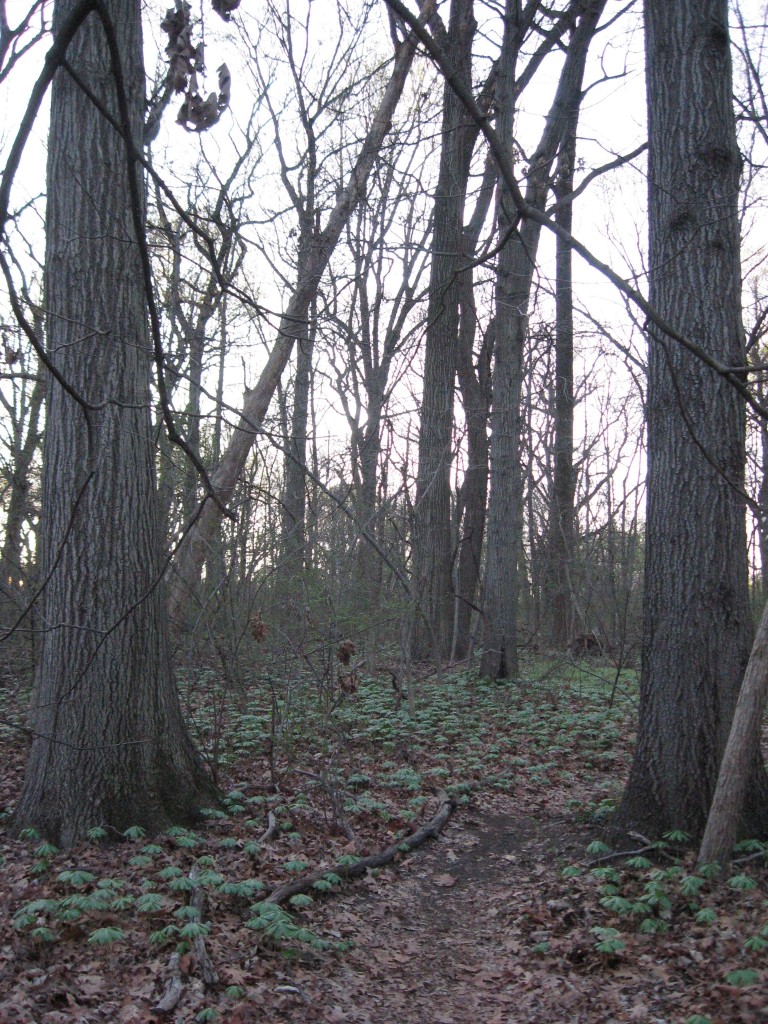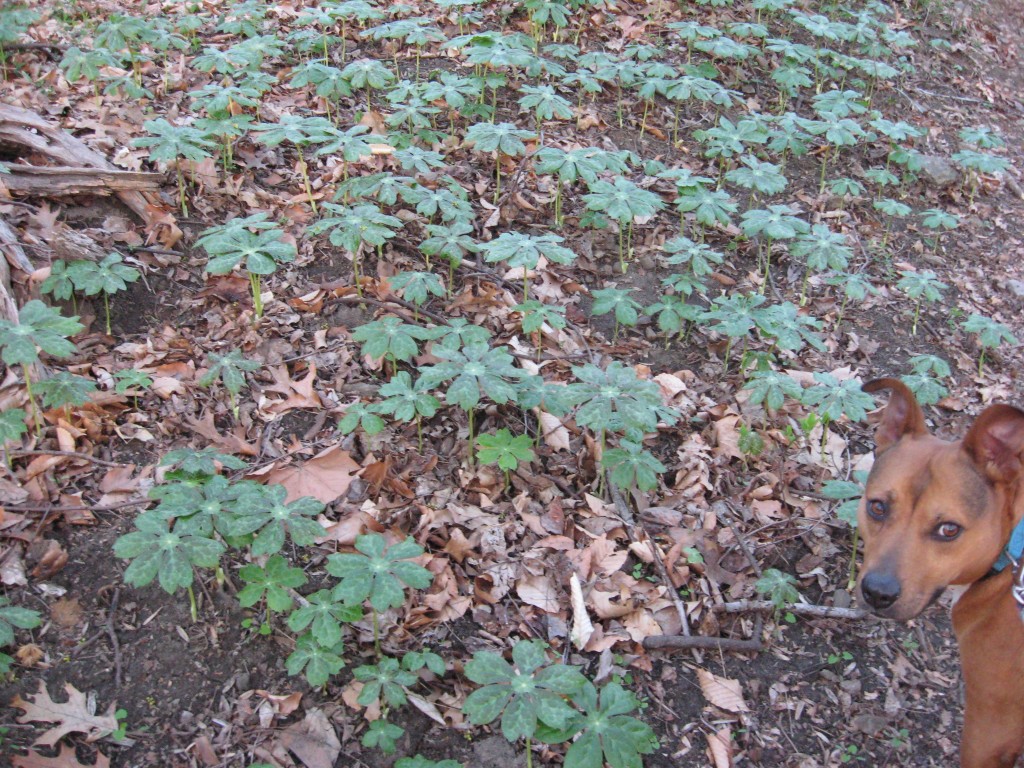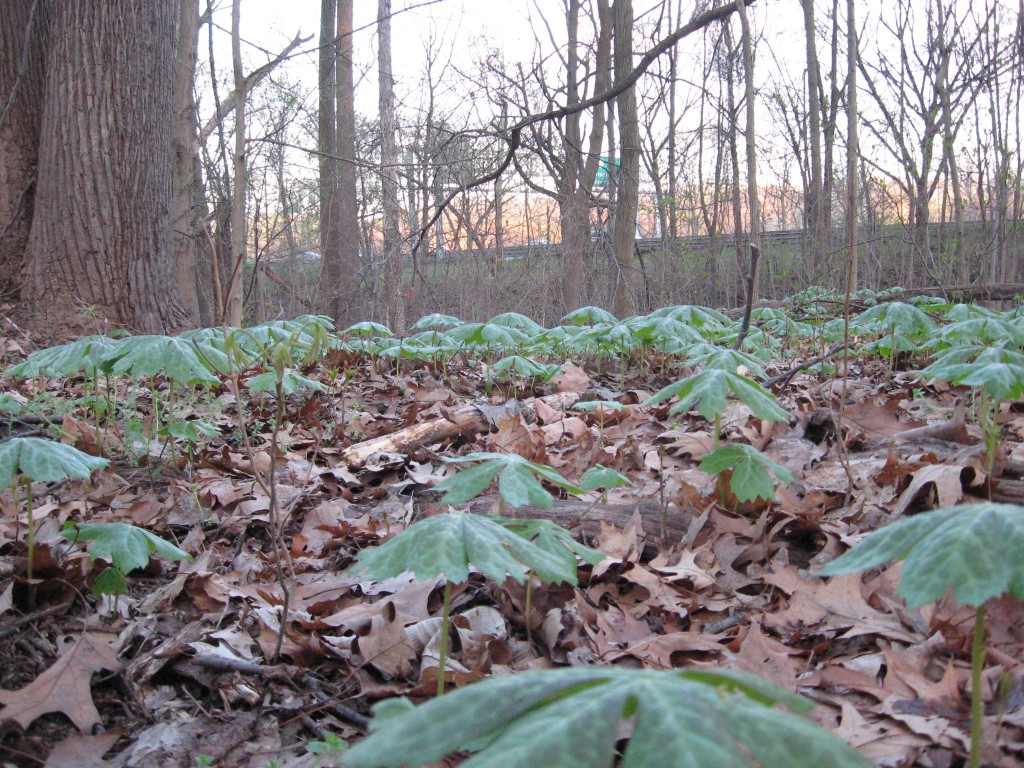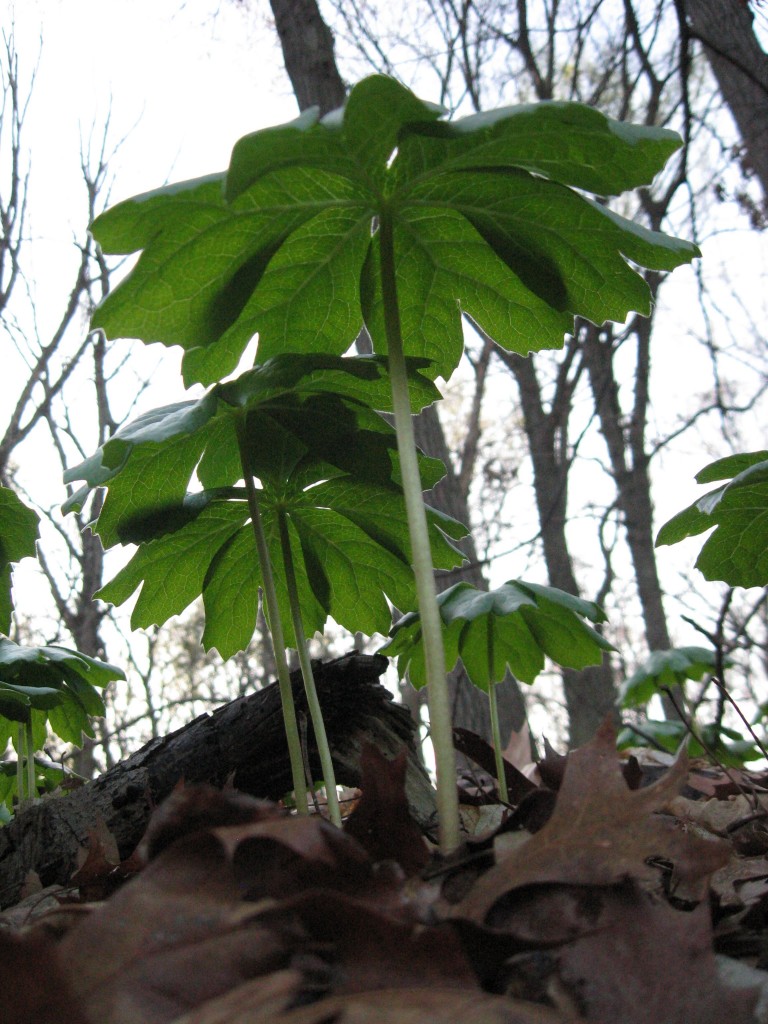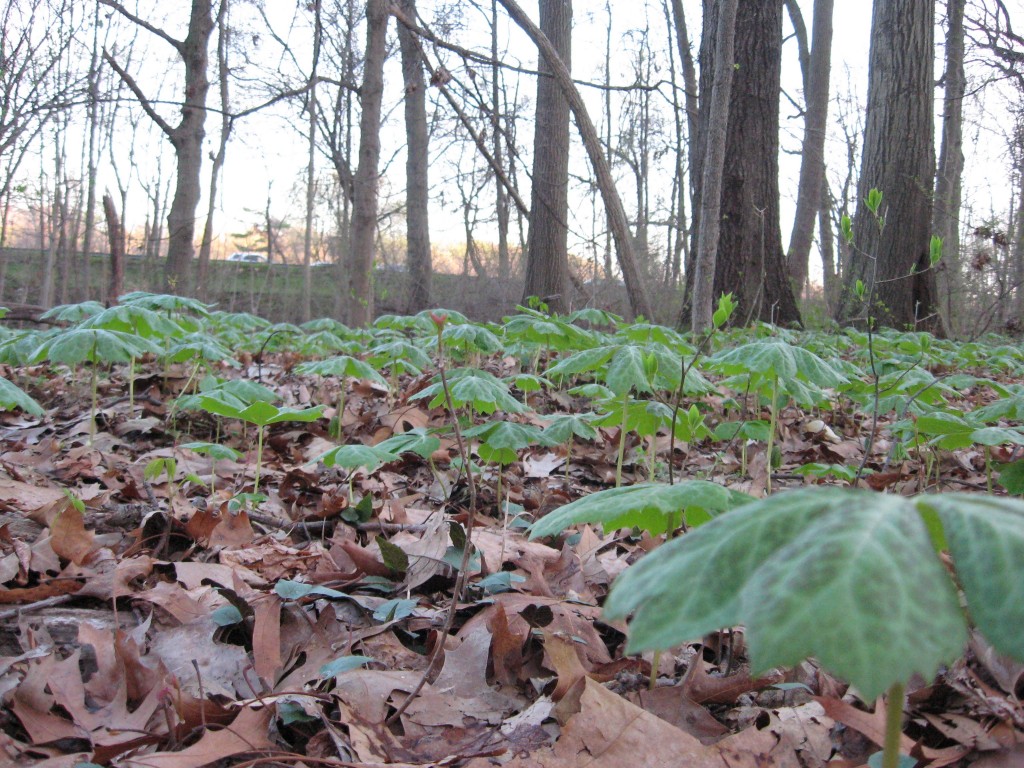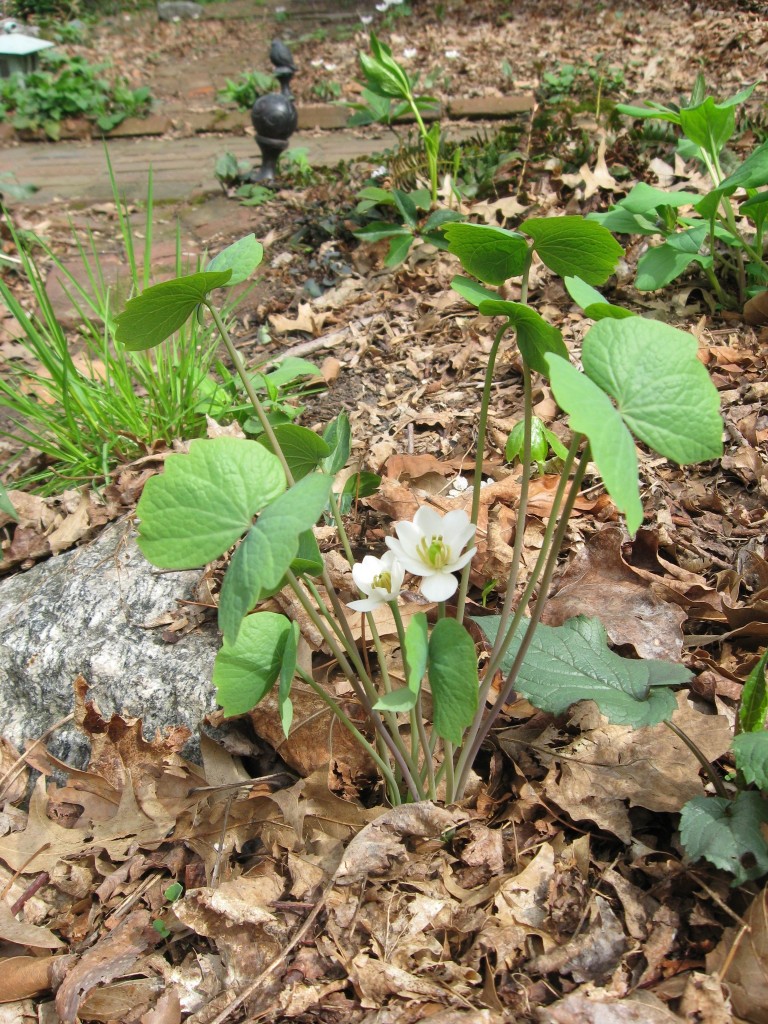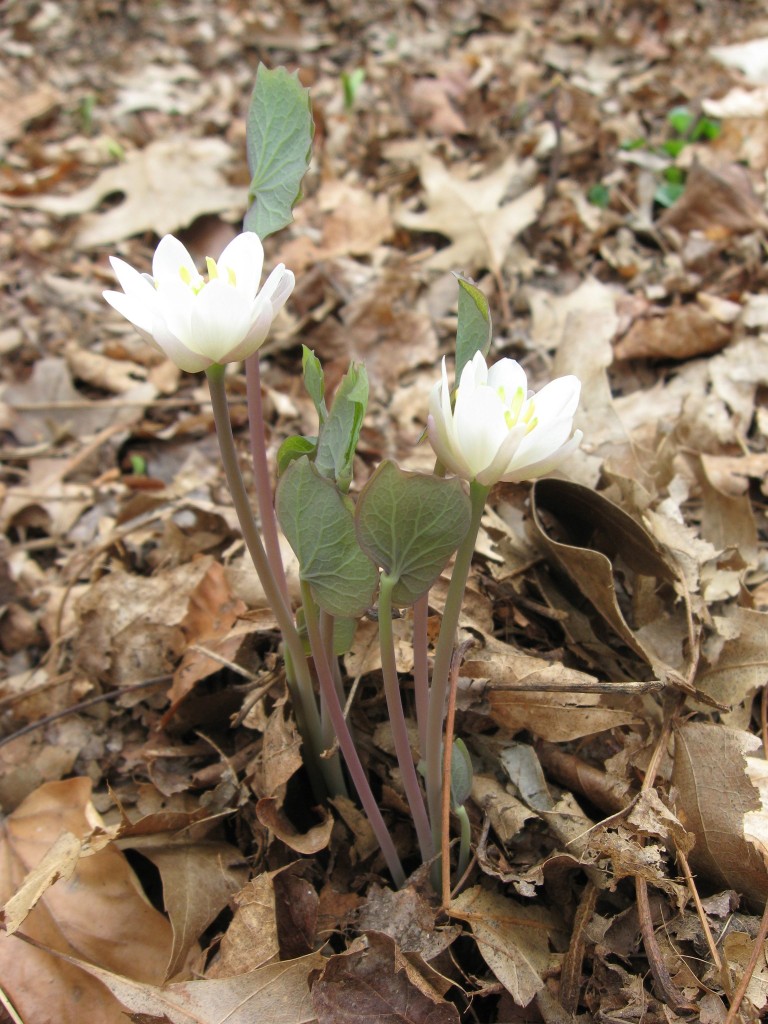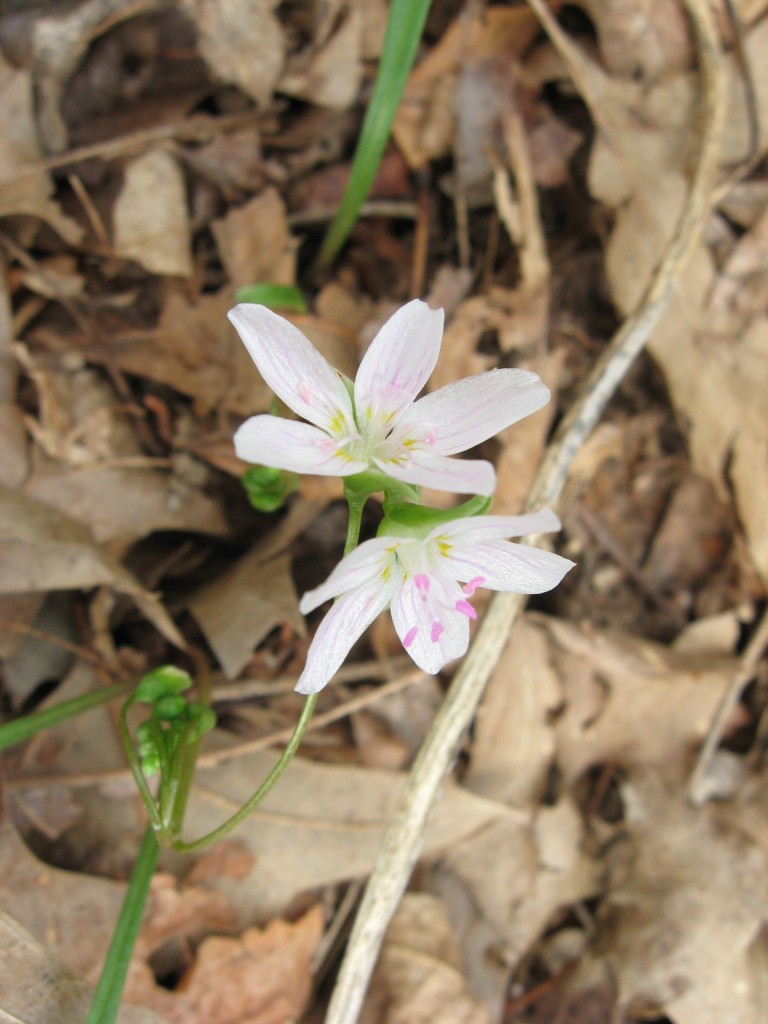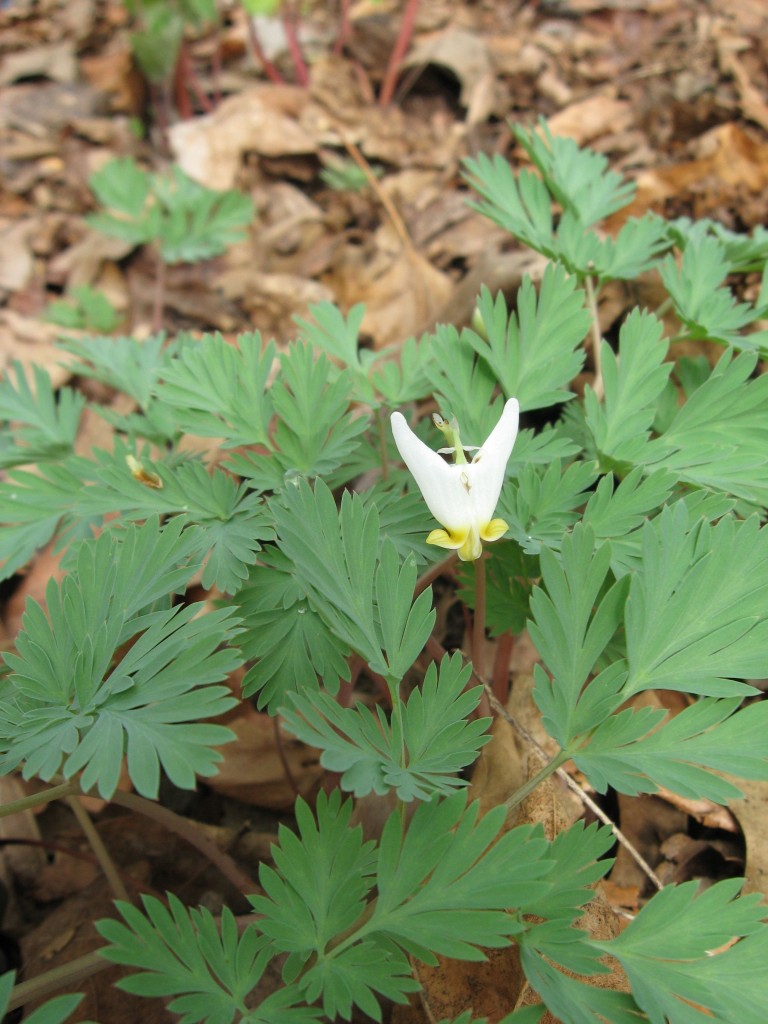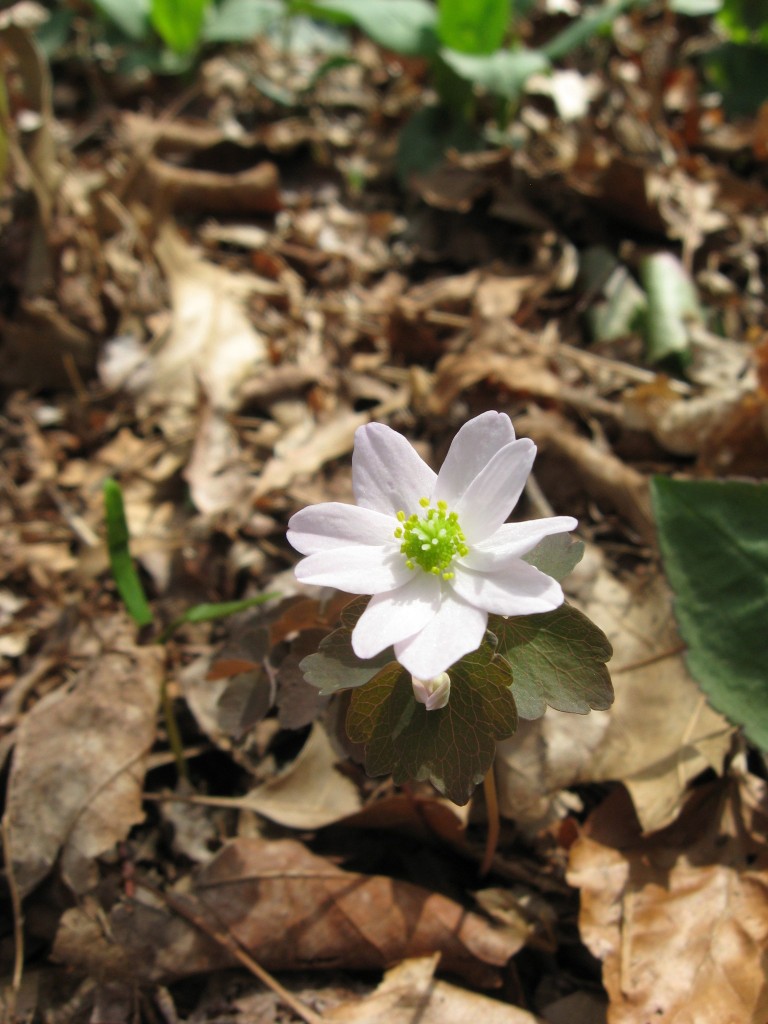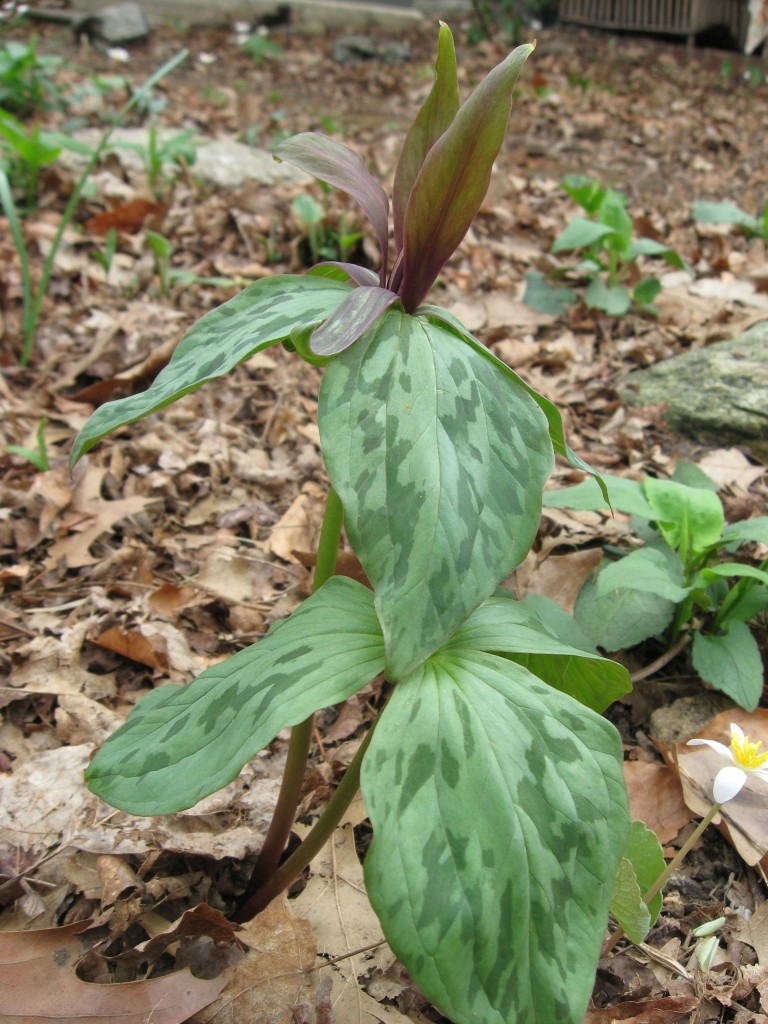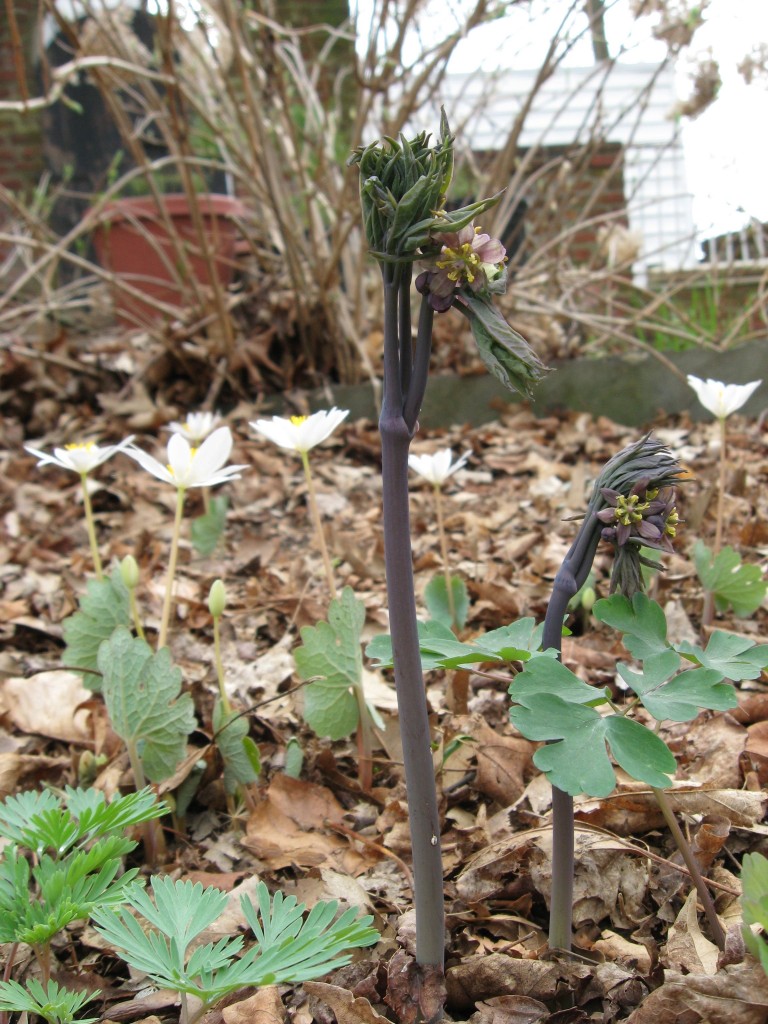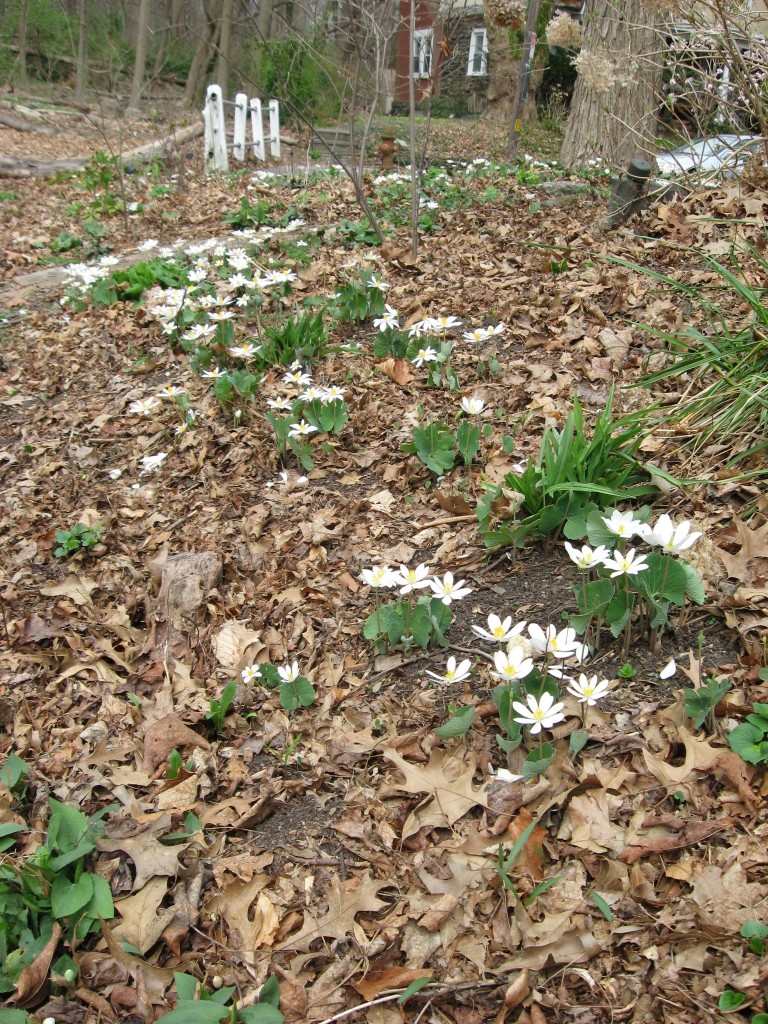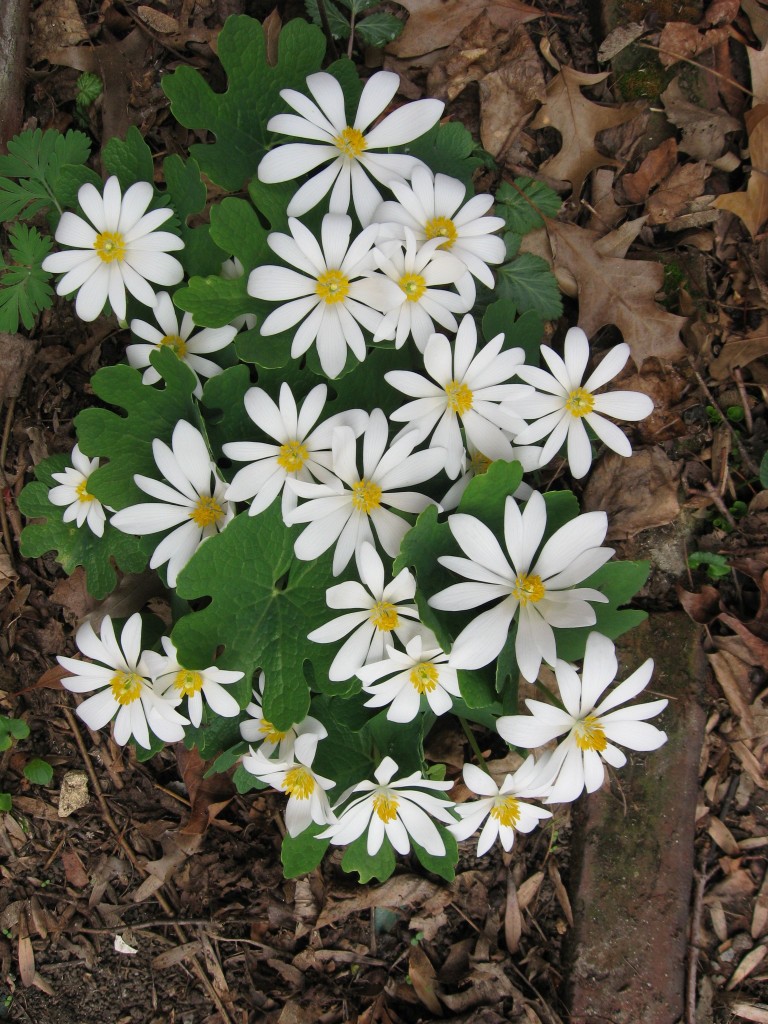In West Park there is a long row of Cherry trees opposite the Horticultural center, on the west side of Belmont Ave. Â At the west end of this row is the marble Total Abstinence Fountain. Â The trees begin blooming at the Fountain, and the blooms move toward Belmont Ave each day during the bloom period. It is easy to miss the day the whole Allee is blooming at the same time. Â In the middle is a limestone pavilion, a remnant of the Centennial Exposition of 1876, which took place on these grounds.
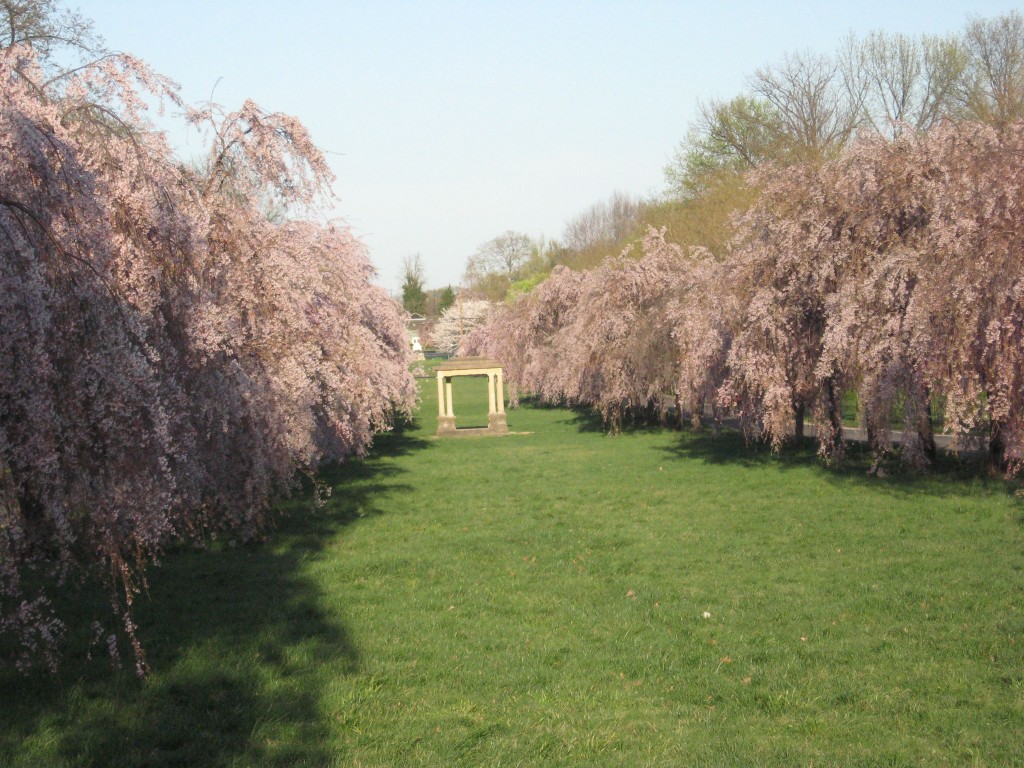
It was great to catch the full blooming of the whole Allee, with a blue sky and a nice evening light. Â We were walking Keeba and then that time came to try to find the nearest trash receptacle. Â We were walking towards Belmont Ave and we passed through a few fields to the north, towards the Ohio House, another vestige of the Centennial, which now is the home to the Centennial Cafe.
On our way through the fields, we came upon the most astonishing discovery:  Drifts of white covering parts of the field.  The white flowers really stood out, and upon closer examination, we saw that they were indeed the native wildflower Houstonia caerulea . Â
WOW! Â The Bluets!
Also called Quaker Ladies, this flower upon closer inspection has a blueish tint. Â The colonies are stunning. Â The flowers are only a half inch across, but when they are en masse, they have a collective display that will satisfy the aspirations of the springtime flower seeker, add curiosity to the casual observer, and provide data for a botanical researcher or student.
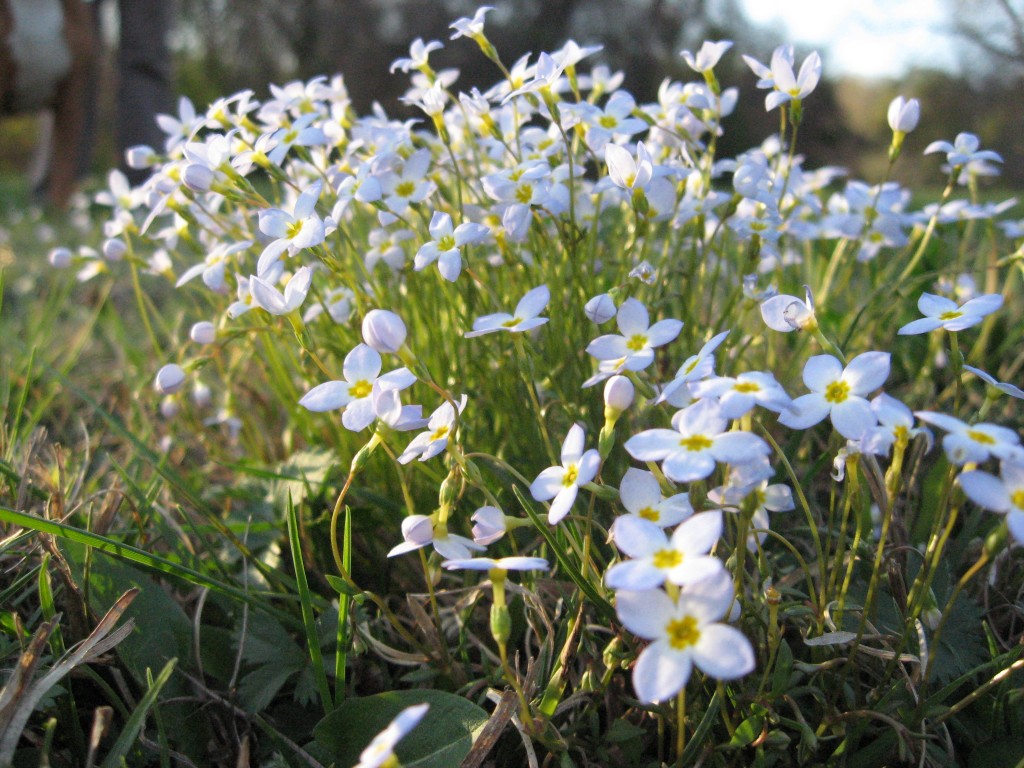
We are on the aspiring flower seeker spectrum on one end and the data collecting students on the other.
We asked ourselves the question, why are they growing here? Â What are the conditions?
Isabelle brought up that they like moss, so we started to look for populations that were associated with moss, and soon enough we found a whole colony growing out of a colony of moss. Â We tried to grow Bluets in our garden, but with no success. Â They really are specific about their conditions. Â Our failure made us more curious about why these plants were growing here. There are wetlands nearby. They like moist environments, like moss does. Â They like some sun too, out in this open field.
The field gets mowed all summer long. Hopefully these fabulous native flower colonies will be able to go to seed before they are mowed down. Maybe the mowed environment allows them to thrive.
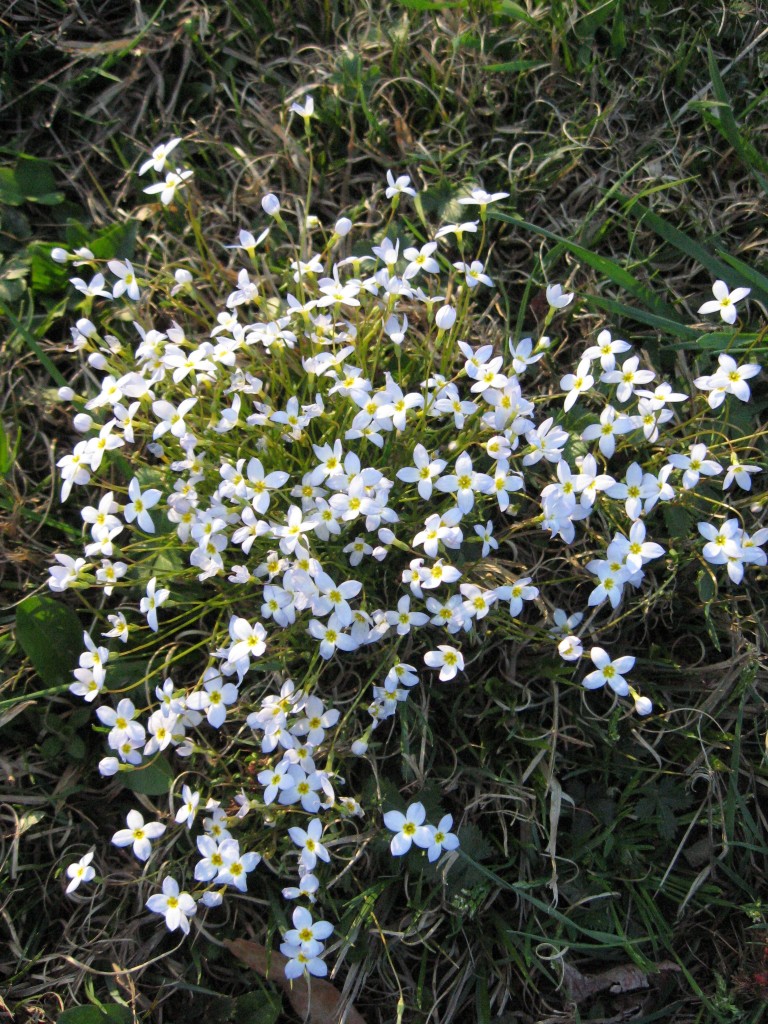
What an exciting discovery!



